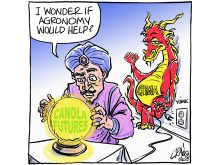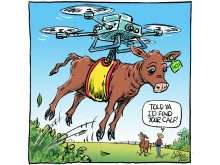Crushing canola as close to the field as possible meets a few goals the prairie agriculture industry has had for more than 40 years.
As new capacity meets burgeoning biofuel demand, which in turn is likely to spark competitive pricing, producers may be tempted to push rotations and pay less attention to sustainability goals.
As it stands, nearly anything that can be grown on an acre of ground is selected for its potential to turn a profit. That allows farmers to make choices that include responsible rotations.
Read Also

Growth plates are instrumental in shaping a horse’s life
Young horse training plans and workloads must match their skeletal development. Failing to plan around growth plates can create lifelong physical problems.
Experience tells us the solutions to high commodity prices are high commodity prices, and eventually they approximate 10-year averages. At the same time land prices, rents, fertilizer, husbandry and machinery costs don’t tend to move lower, resulting in margins that also resemble 10-year averages.
That means tougher cropping choices and pressures to more carefully consider the economic aspects of sustainability practices.
In recent decades, the economic push to grow more with less has resulted in western Canadian producers having to manage on low margins while developing production systems that limit waste, such as tillage or excess fertilizer application.
Farmers made those changes for success and sustainability reasons, not due to the threat of market loss or government enforcement of environmental rules, or even doing what appeared to be the best for the land.
But new realities may not always be tied to farmers’ financial success, at least in the short term.
Market signals to the farm need to be compatible with the new globally acceptable and certifiable sustainability demands. Otherwise, producers will be hard pressed to incorporate them over the long haul.
Financial pressures tend to determine what farmers will plant or rear. Margins point the way and lenders help divine the path.
When it comes to crop rotations and farm practices, long-term sustainability goals can only be achieved if there are equally long-term public policy supports for those activities. The global market, despite making greater demands on growers, does not support innovation in bankable ways.
And innovation itself isn’t often expressed under extreme economic pressure.
Premiums for early adopters of traceability, and other practices that are deemed to be sustainable, have a way of disappearing when more than 40 percent of producers adopt them. Examples include reduced tillage, continuous cropping and the federal-provincial position on carbon credits.
The Canadian Agri-Food Sustainability Initiative is intended to create sets of sustainability practices that will work with global market demands and help eliminate duplication. The Canadian Federation of Agriculture is leading the process and hopes to capture and communicate best management practices for producers.
The program’s goals include improvement of economic, environmental and social outcomes. CASI will benchmark programs and international standards.
Everyone involved in this must consider farm operation realities. When finances become tight on the farm and as domestic processing markets shift, all parties must consider what sustainable farm policy really looks like.
If they are to work, benchmarks must be anchored to timely farm economics.
Karen Briere, Bruce Dyck, Barb Glen and Mike Raine collaborate in the writing of Western Producer editorials.















